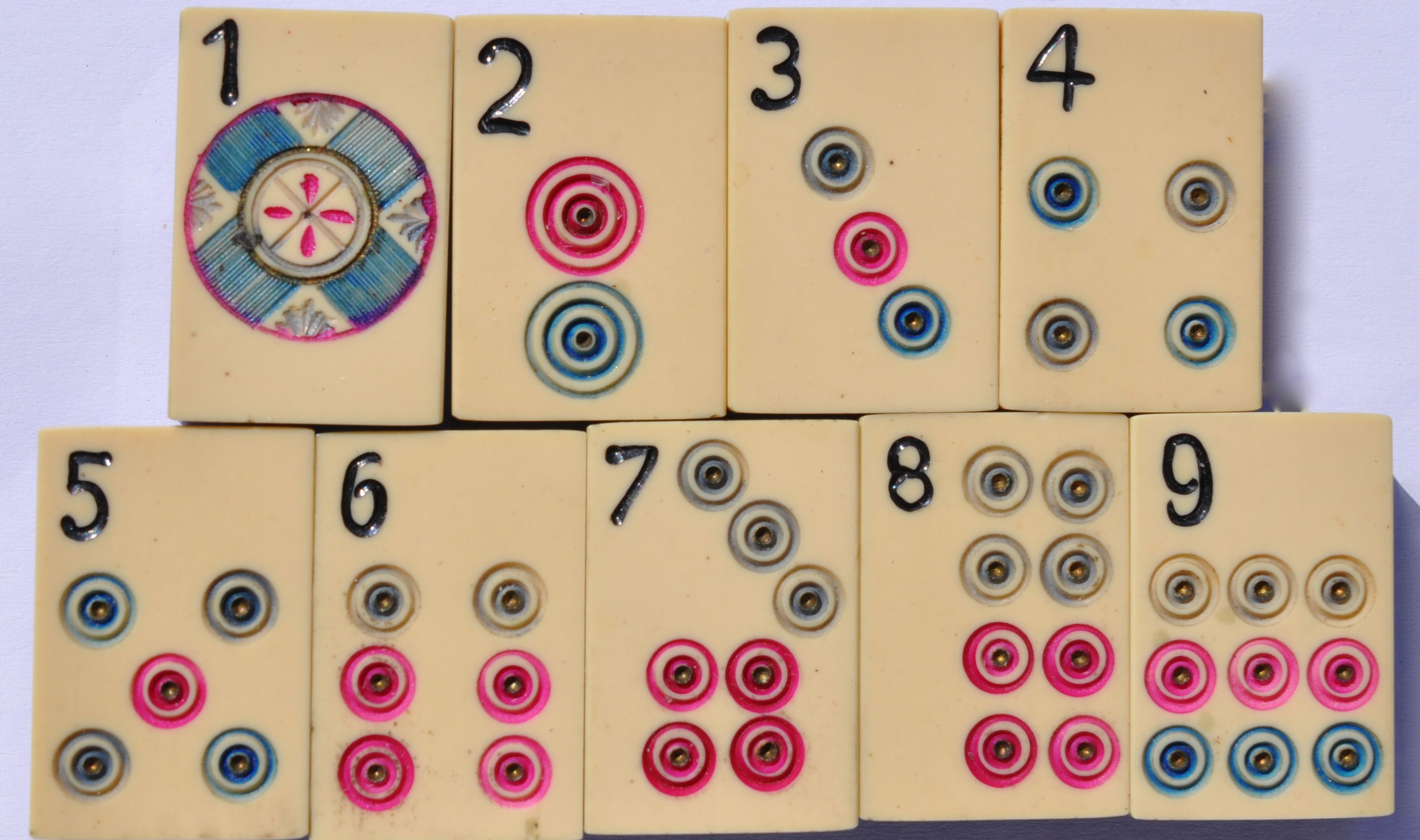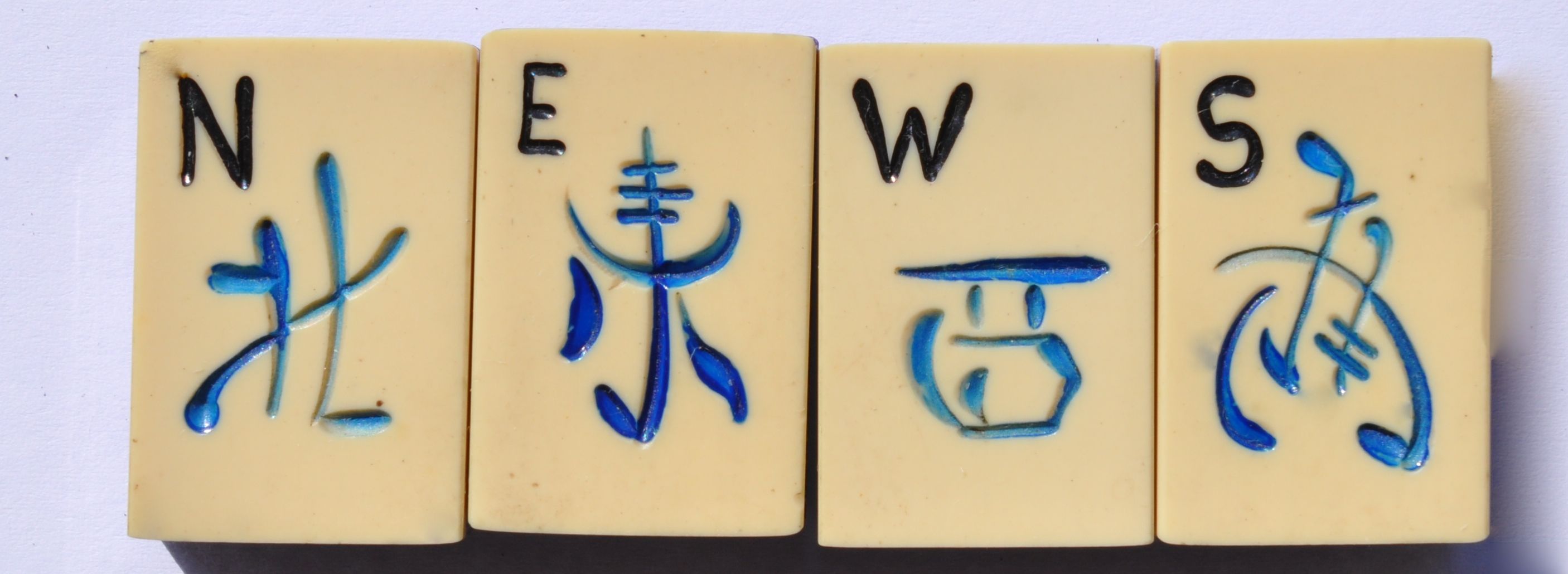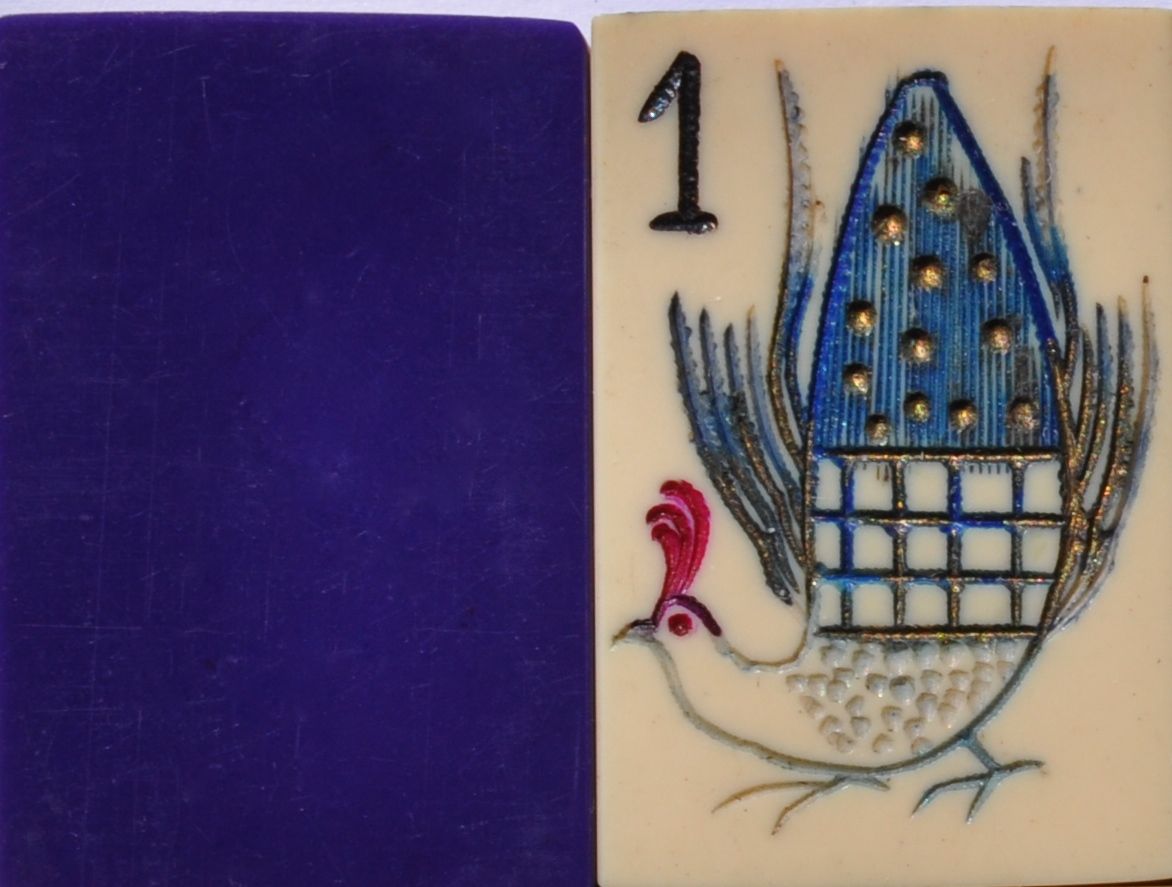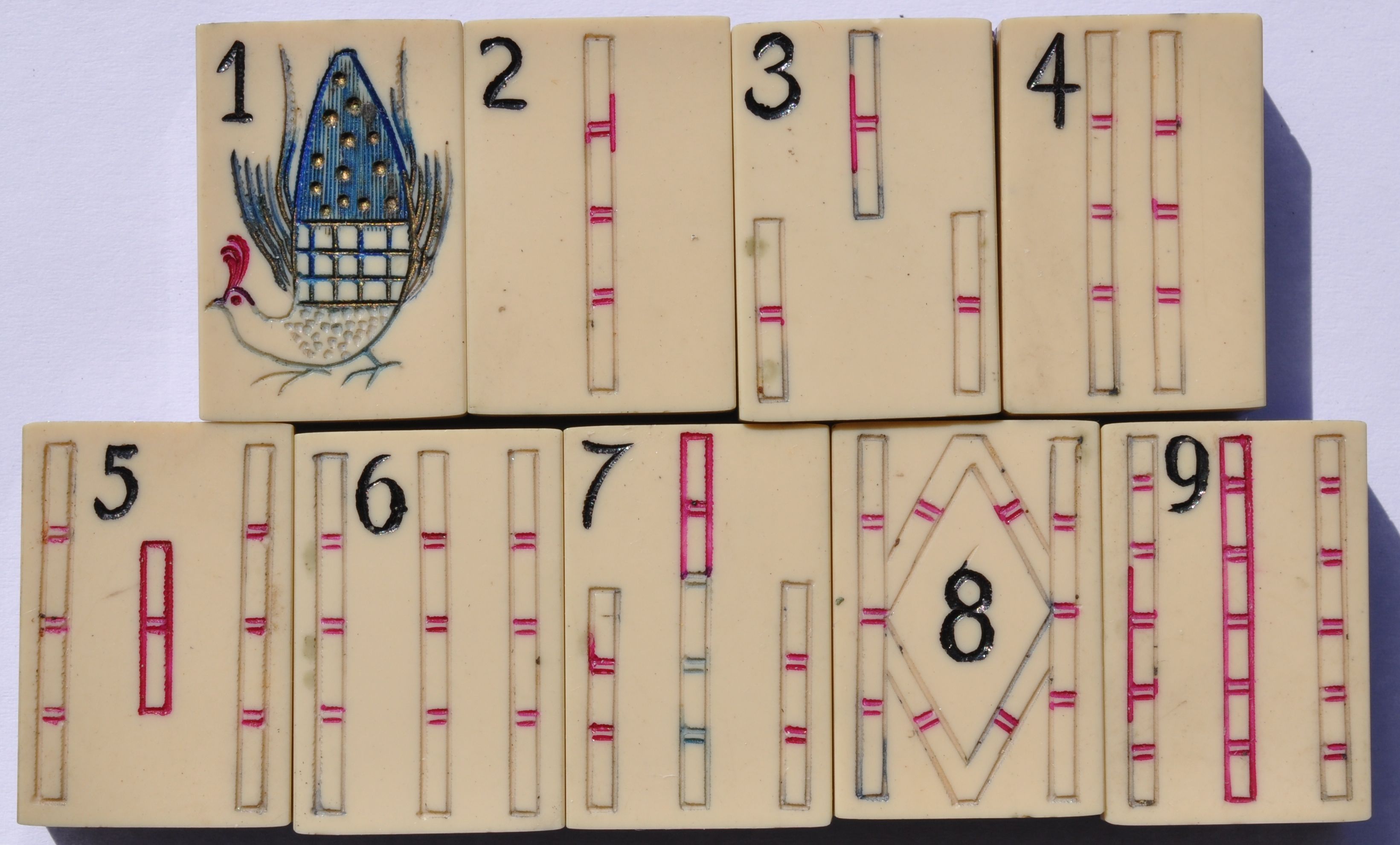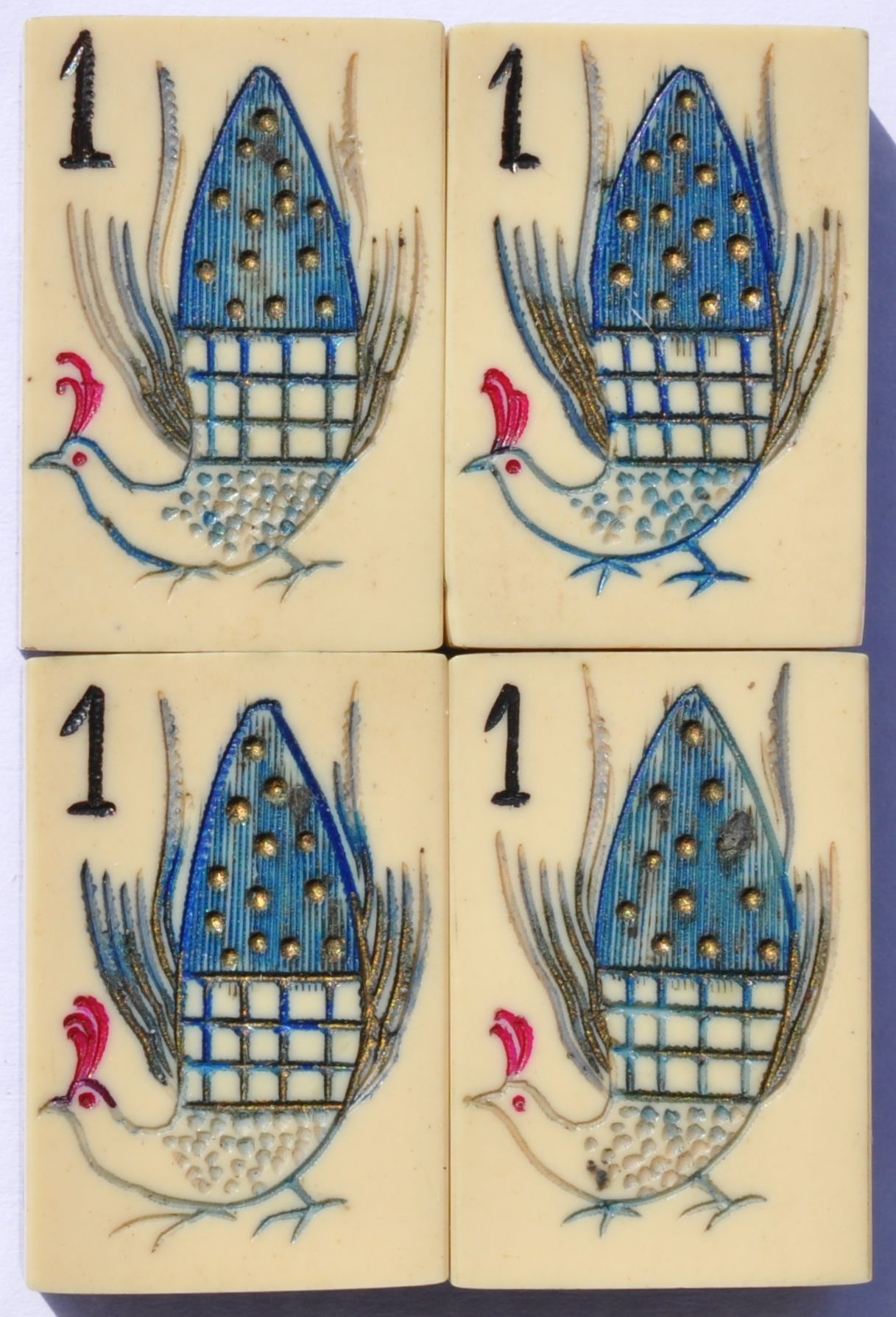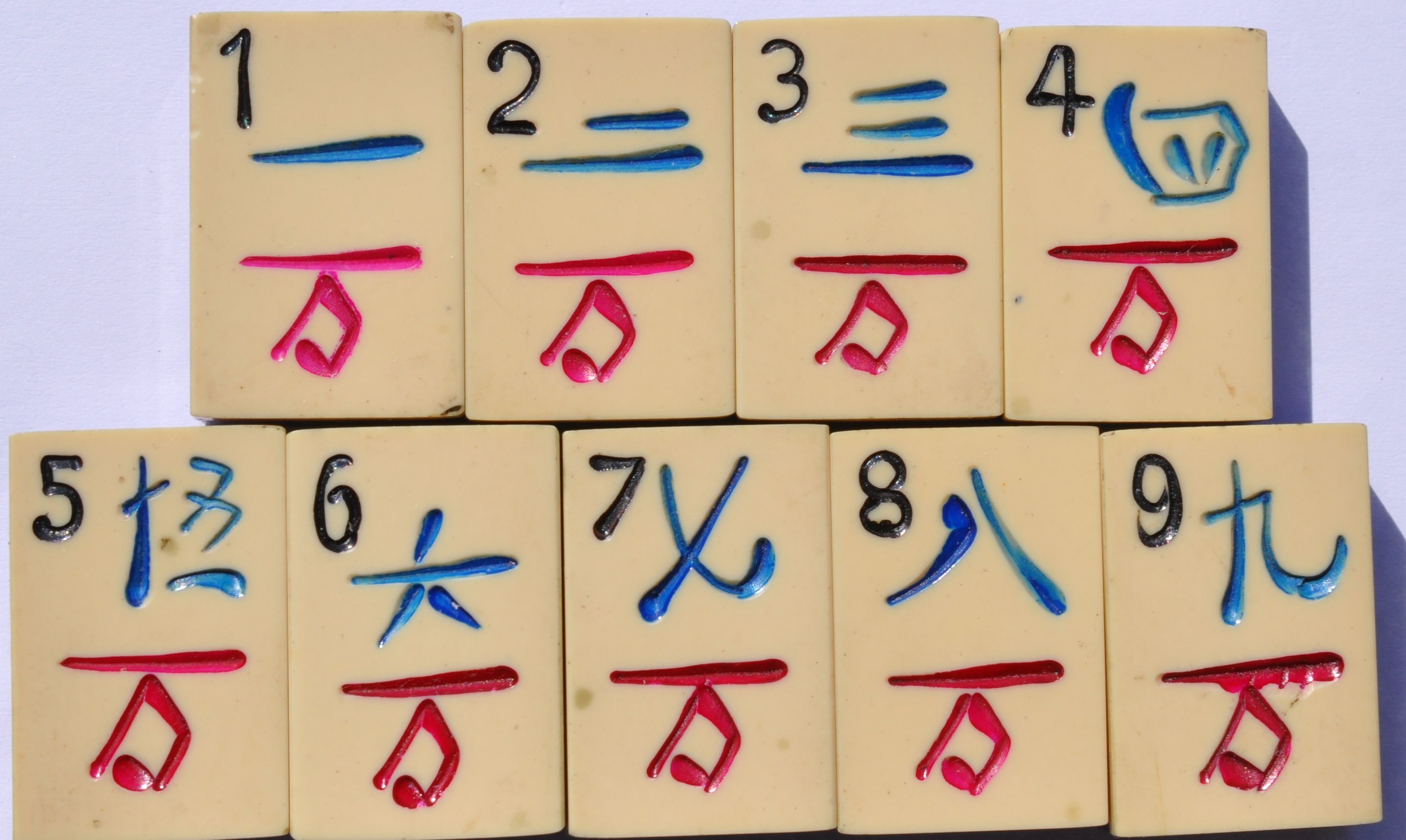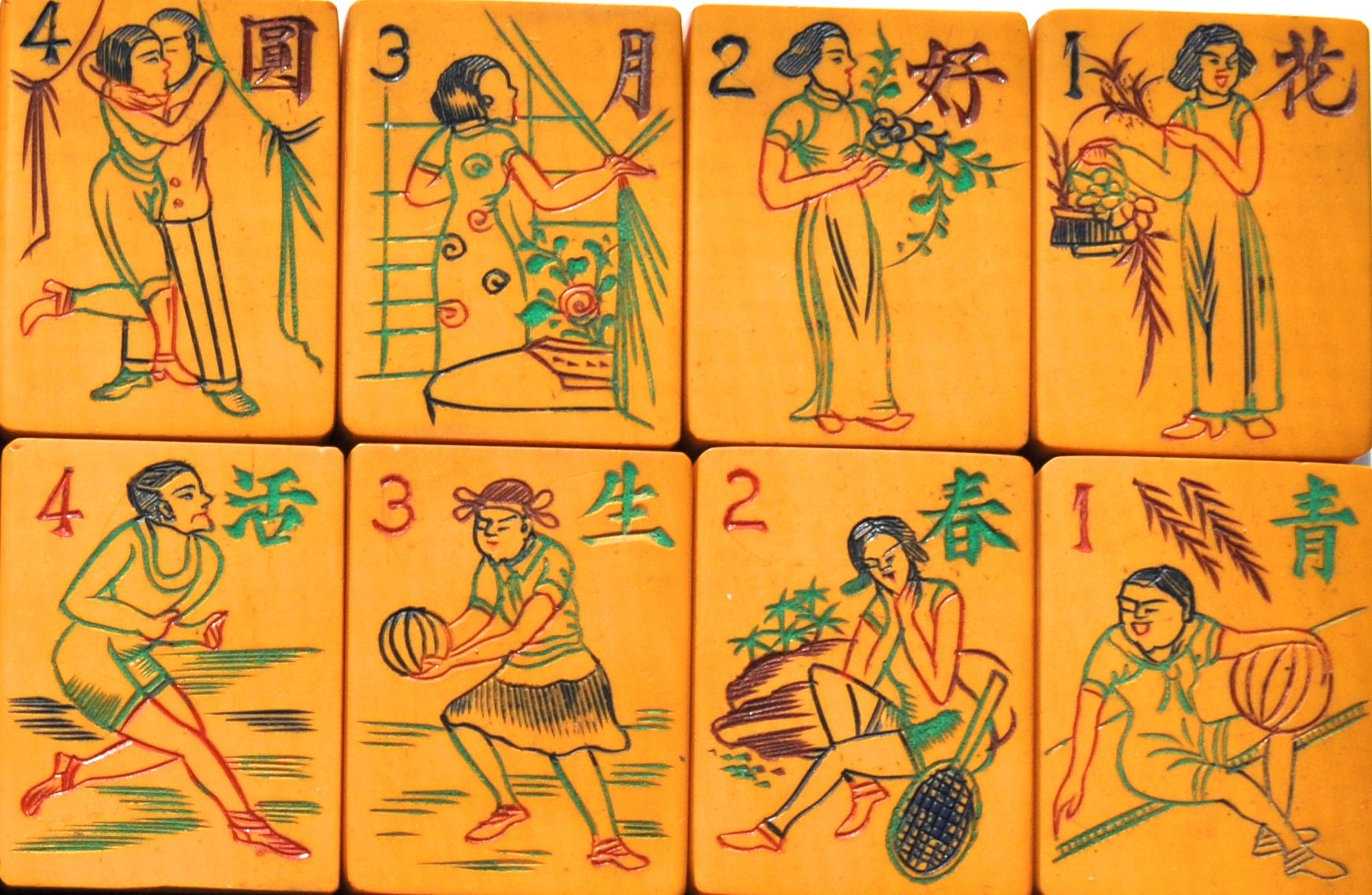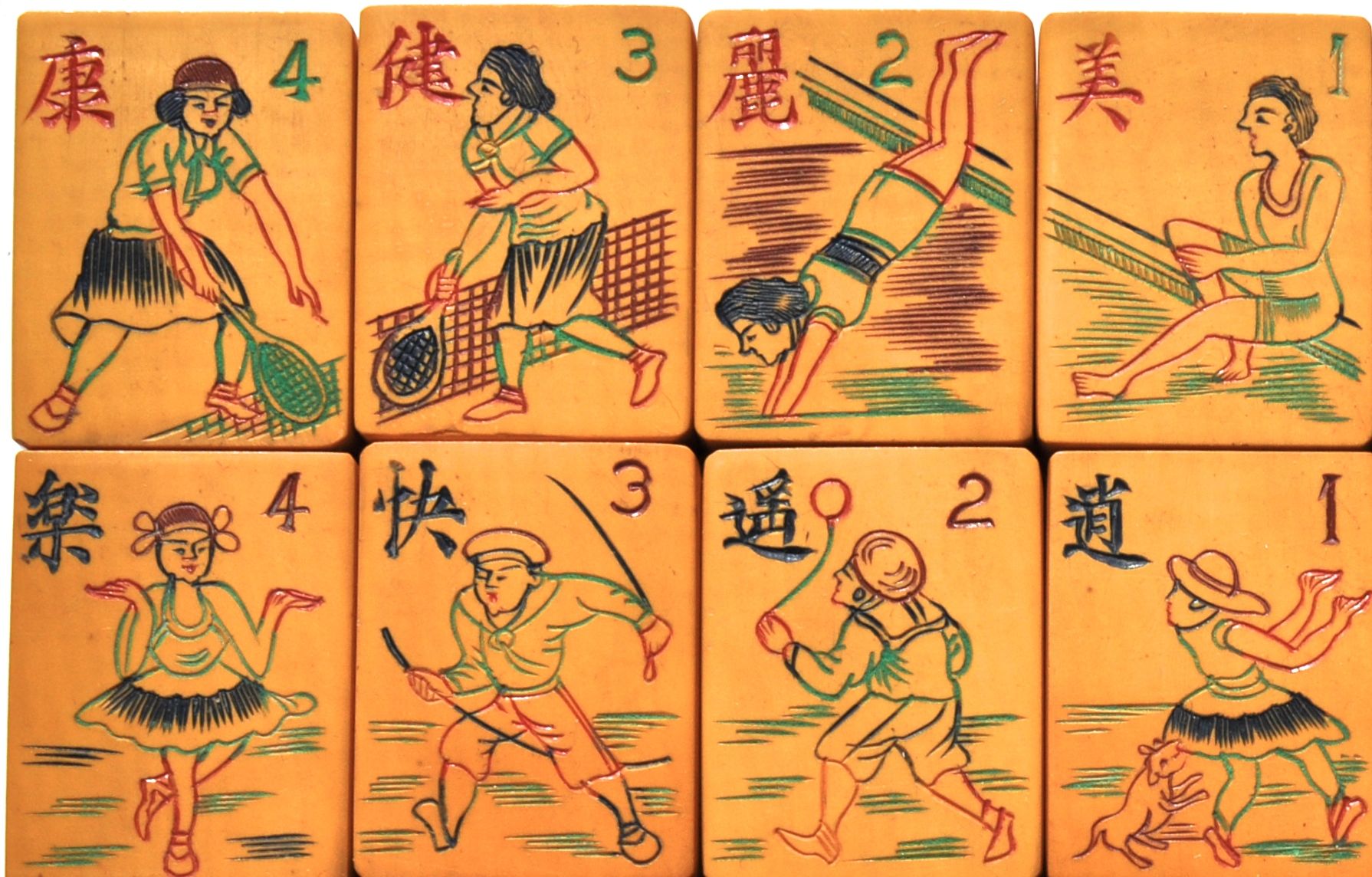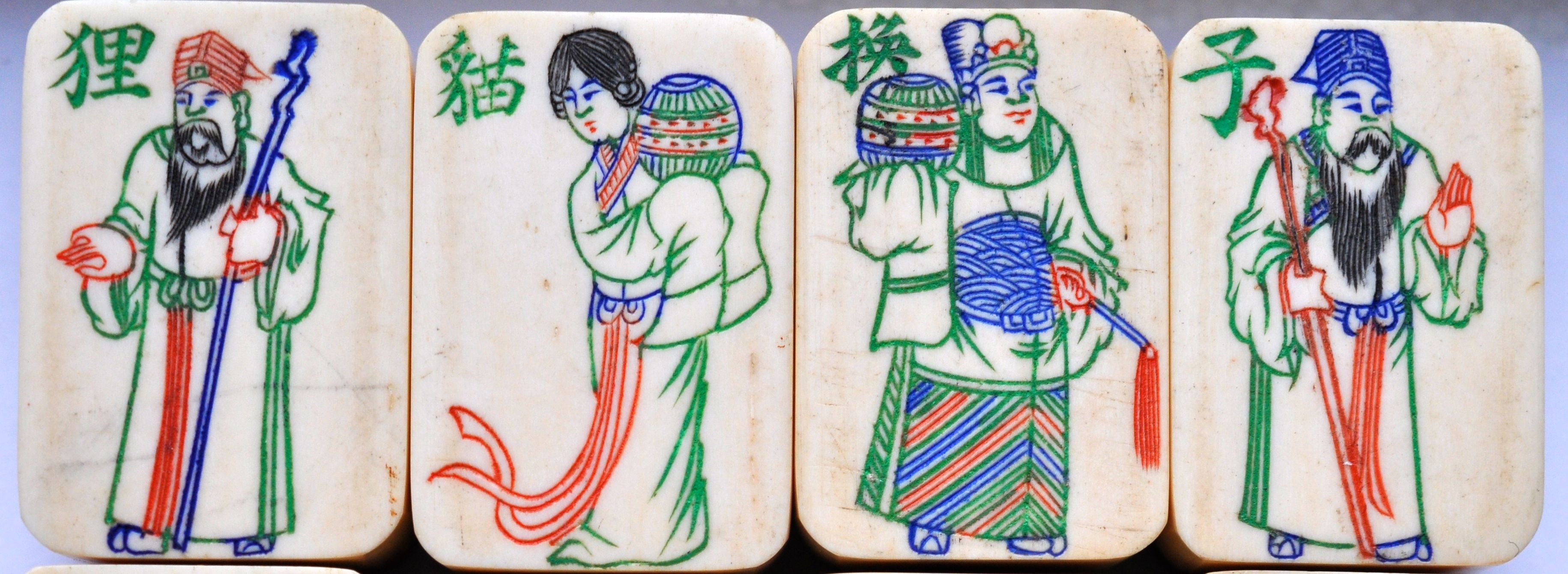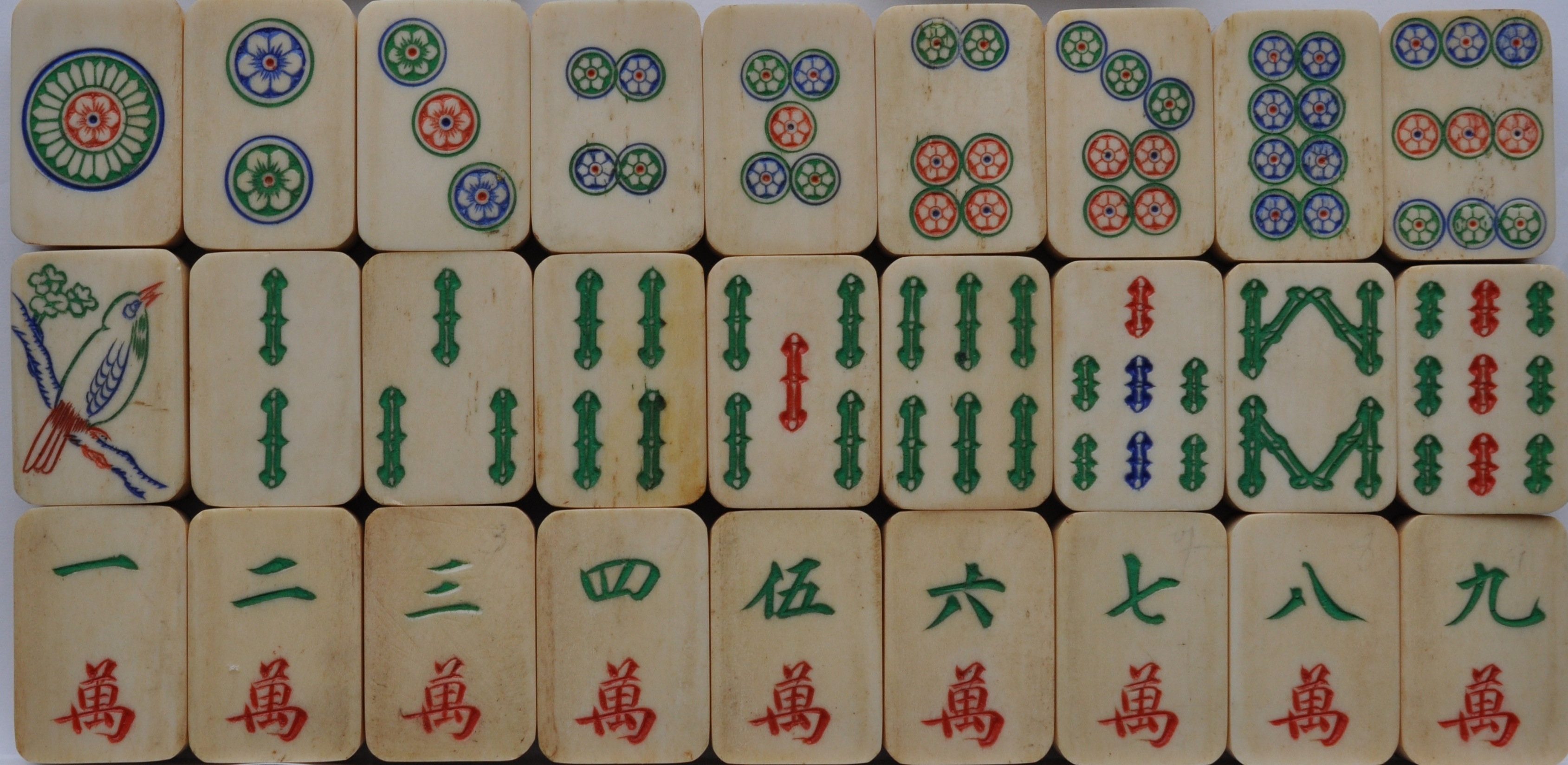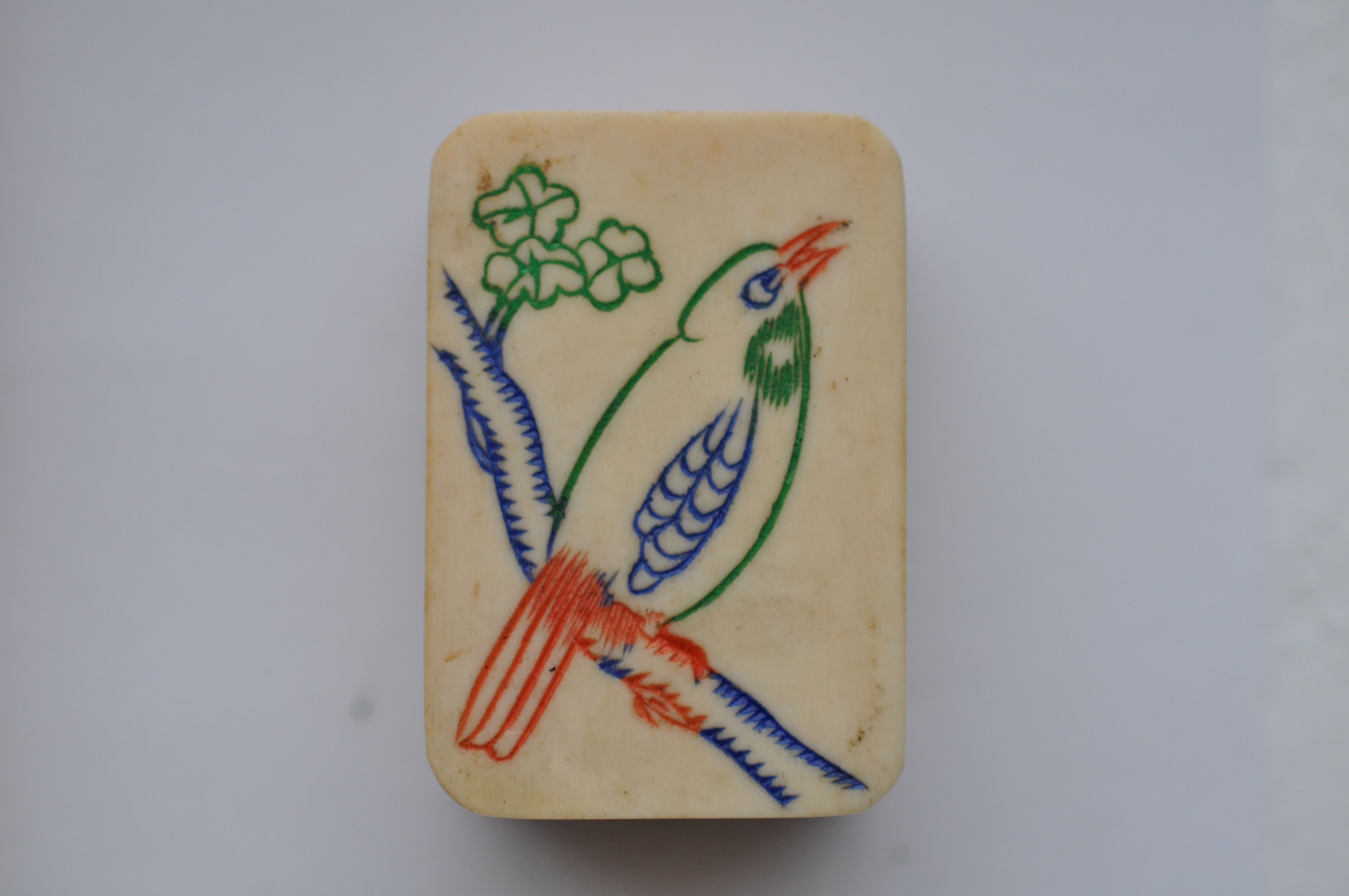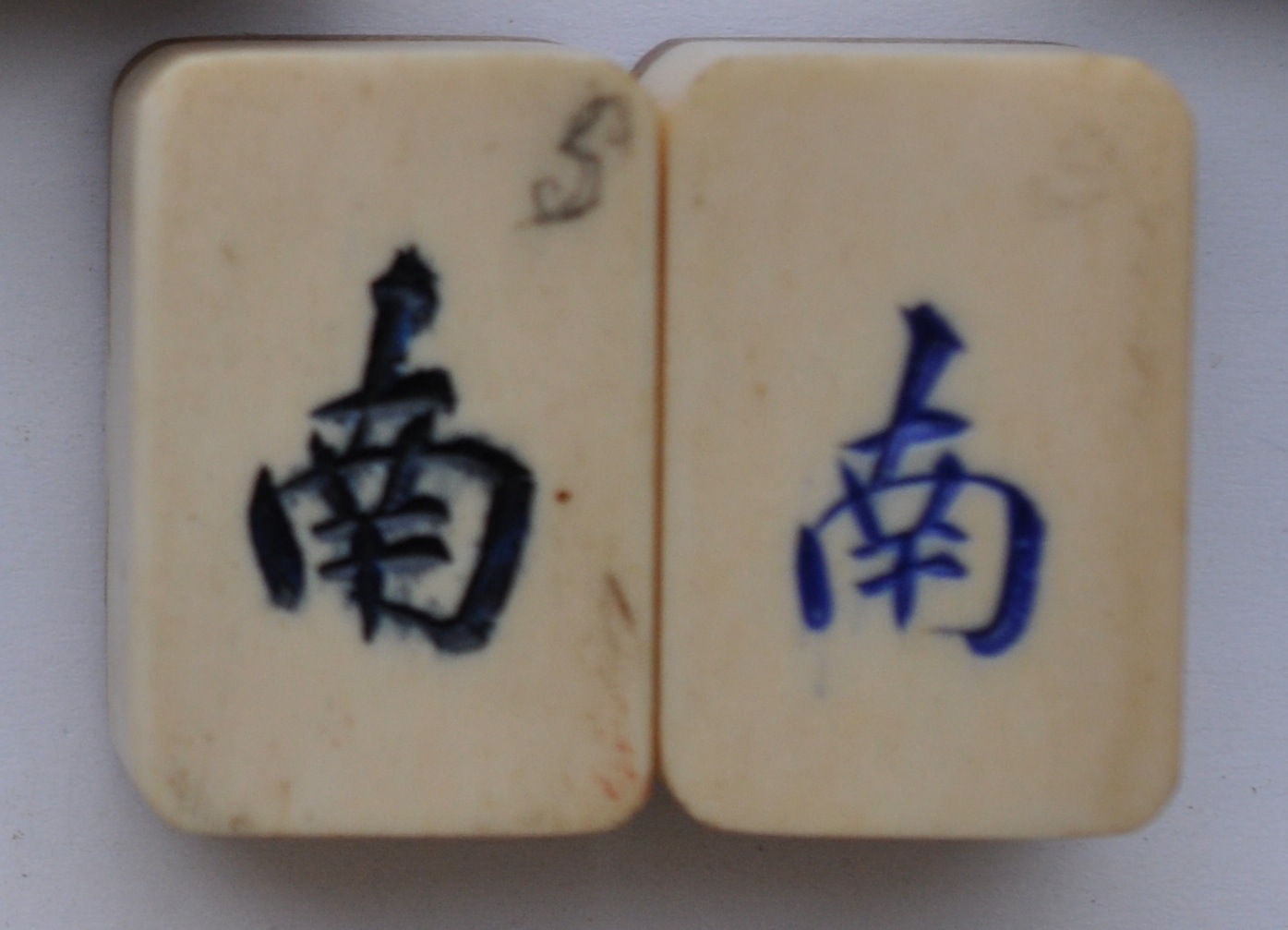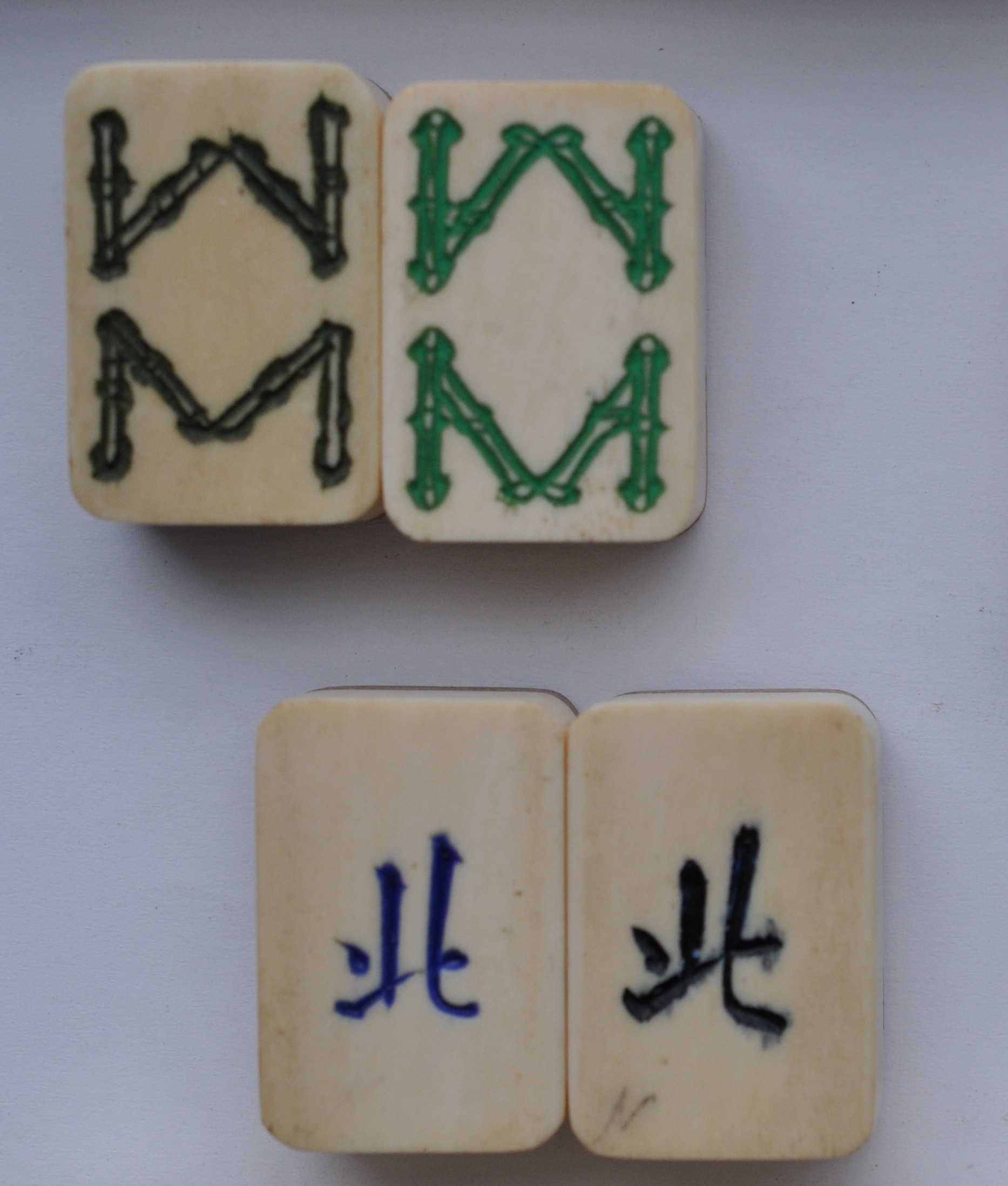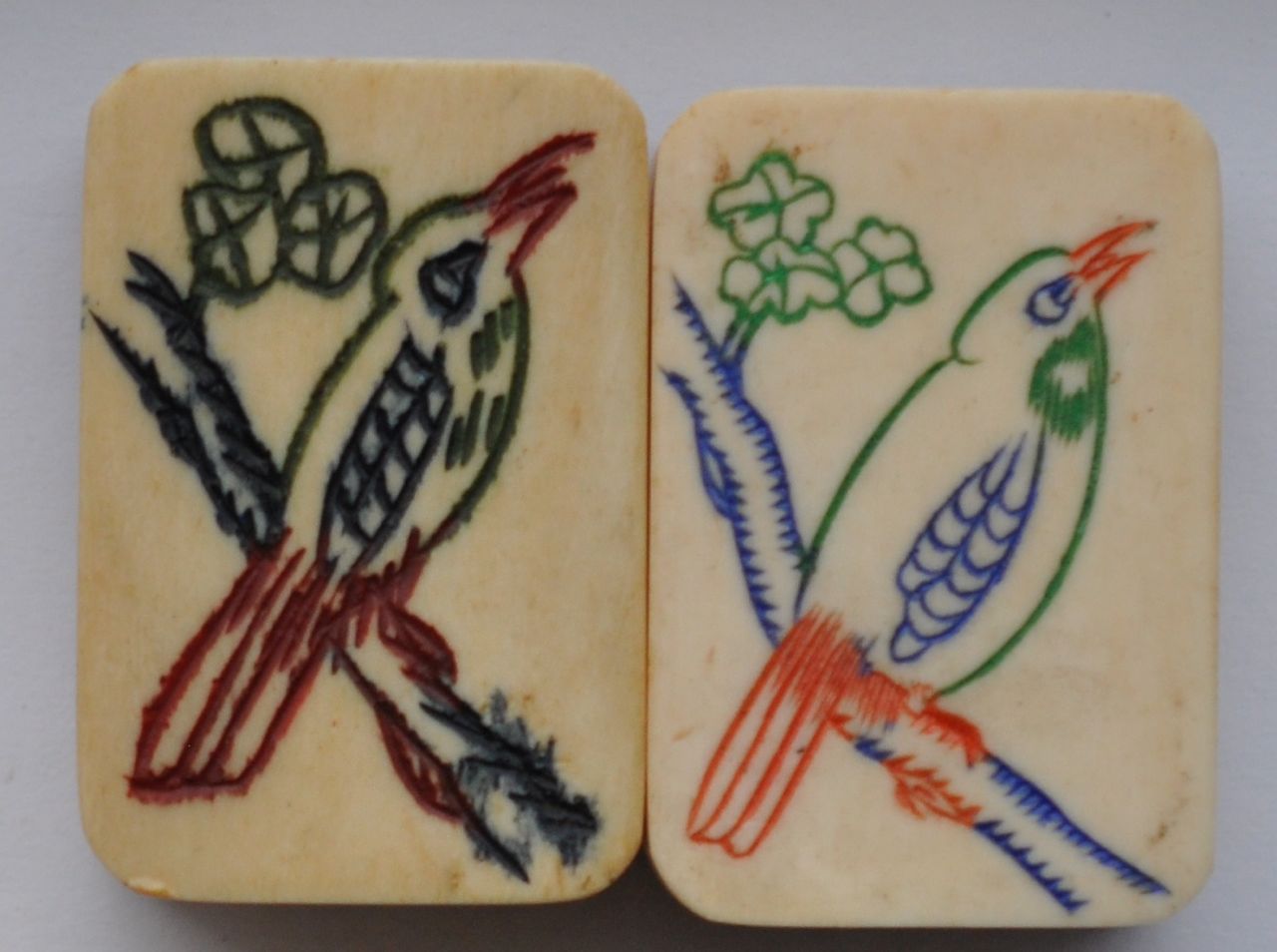
As collectors and people who want to have a better understanding of images on Mahjong tiles, we look for sets that have something different about them. This set certainly does, including that wonderful One Bam we saw yesterday. You will quickly see the details making the set so unusual, especially in the lower row with the clothing and the facial painting on the third person from the left. The robe of the far left man has several longevity symbols on it, including on the sleeves and lower robe. The third person has spirals on the robe, and the fourth a floral pattern.
Ray Heaton has once again provided translations and an understanding of the story behind these Mahjong tiles.
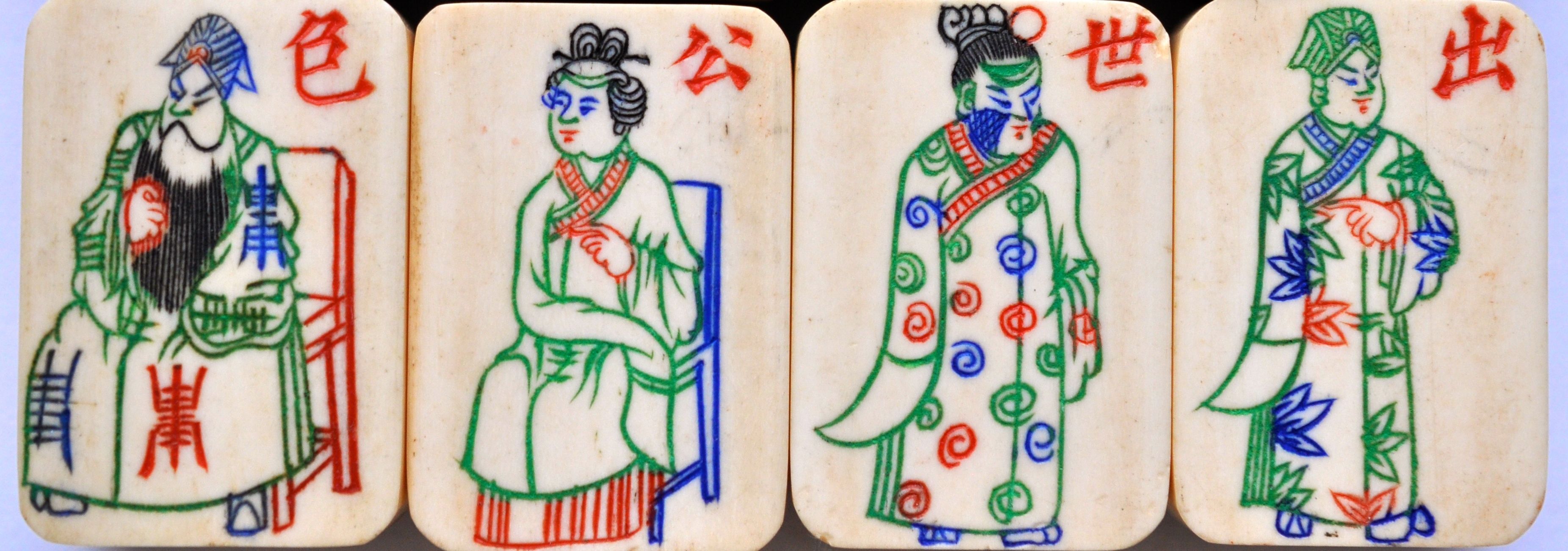
"I don't think there's a simple translation directly into English that'd make sense, so I have interpreted a bit.
Bottom set are 包公出世, Bao Gong Chu Shi.
I think this translates effectively to 'the Biography of Bao Gong". Bao Gong is also known as Judge or Justice Bao, Lord Bao and Bao Zheng.
Chu Shi (the second two characters) mean "to be born", but looking at other uses of the phrase, it probably means here "...the life of...", hence the translation suggested.
There is an opera with the same title"
"Bao Gong lived from the year 999 to 1062 and was a government officer during the reign of Emperor Renzong in the Song Dynasty. Bao consistently demonstrated extreme honesty and uprightness, with actions such as sentencing his own uncle, impeaching an uncle of Emperor Renzong's favourite concubine and punishing powerful families. His appointment from 1057 to 1058 as the prefect of Song's capital Kaifeng, where he initiated a number of changes to better hear the grievances of the people, made him a legendary figure."
Top set set, 狸貓換子. Li Mao Huan Zi. The first two are "Leopard Cat", a small wild cat from Asia. Third one means "to exchange", and the last one means "child".
This is referring to the "Wild Cat Exchanged for Crown Prince" episode (in full, there's one more character for this, 狸貓換太子)."
From Wikipedia:
Wild Cat Exchanged for Crown Prince (狸貓換太子): Bao Zheng met a woman claiming to be the mother of the current Emperor Renzong. Dozens of years ago, she had been Consort Li, an imperial concubine of Emperor Zhenzong's, before falling out of favor for supposedly giving birth to a bloody dead Chinese wild cat. What really happened was a jealous Consort Liu plotting with eunuch Guo Huai to secretly swap Li's infant son with a skinned Chinese wild cat minutes after birth. The infant eventually became Emperor Renzong, but he refused to accept Bao's findings. As Kou Zhu, the palace maid who defied orders to help smuggle the baby to safety, had already died, getting a confession from Guo Huai presented a challenge. With the help of a woman dressed as Kou's ghost, Bao dressed himself as the hell overlord Yama and used Guo's fear of the supernatural and guilt to extract the confession. After the verdict was out, Bao also ordered a set of beatings for the emperor for failing to oblige filial piety; the emperor's Dragon Robe was beaten instead. Eventually Emperor Renzong accepted Consort Li and elevated her as the new Empress Dowager.
To read more about Bao Gong, click here
http://en.wikipedia.org/wiki/Bao_Zheng
Thank you, Ray!

